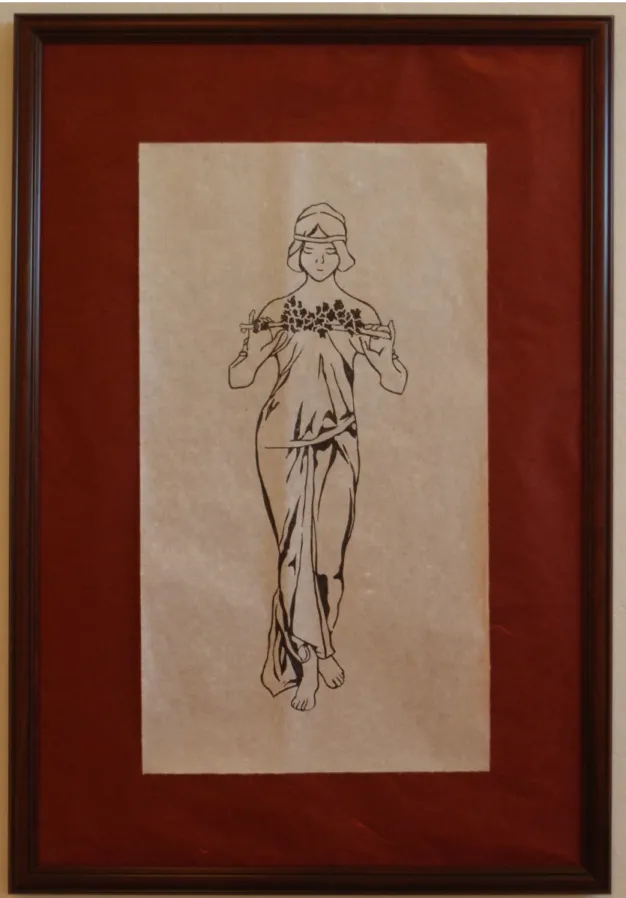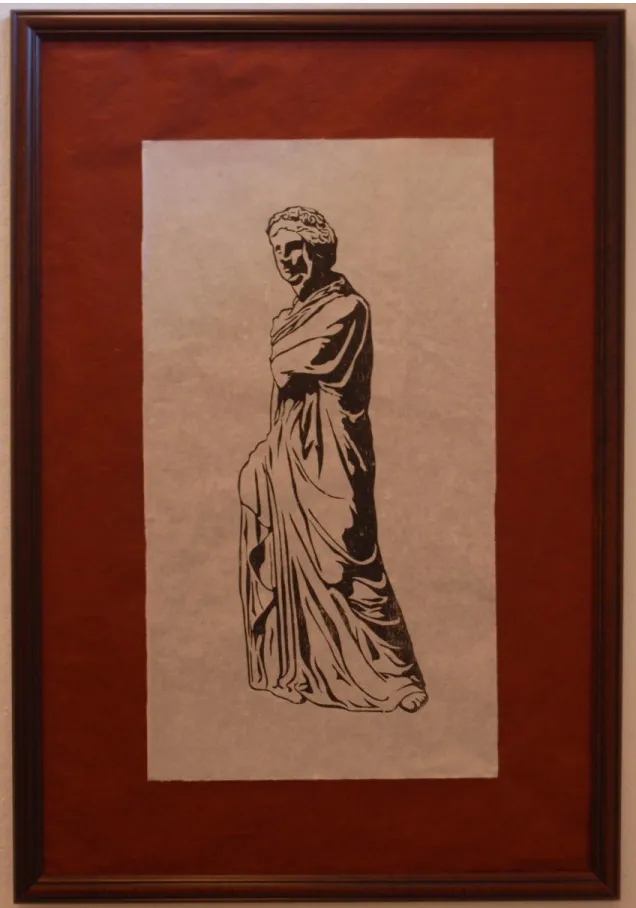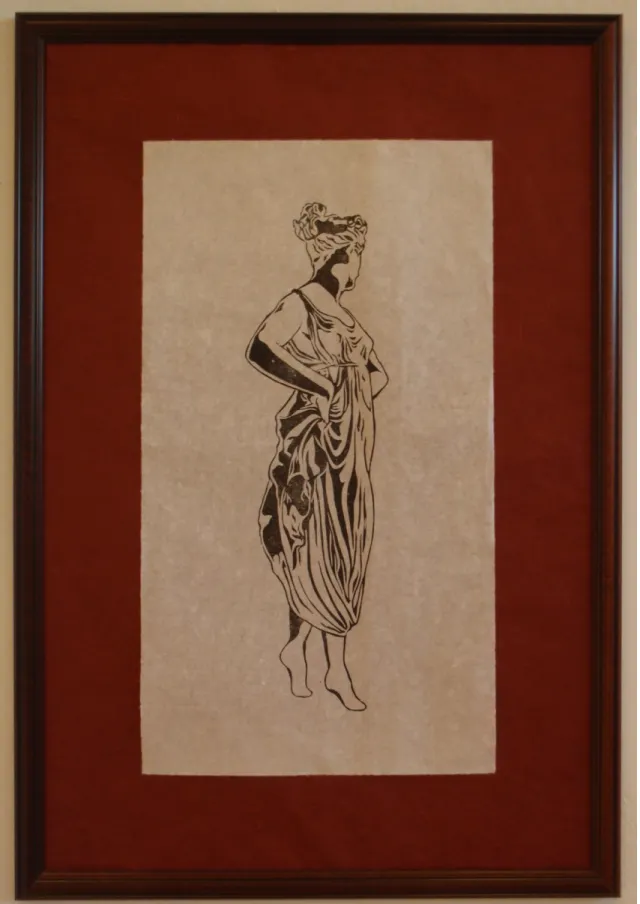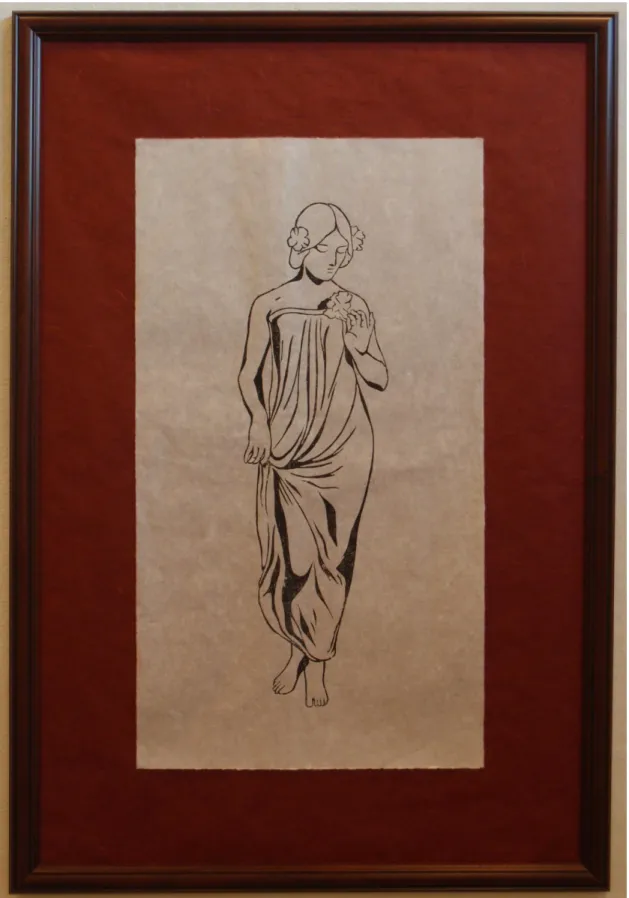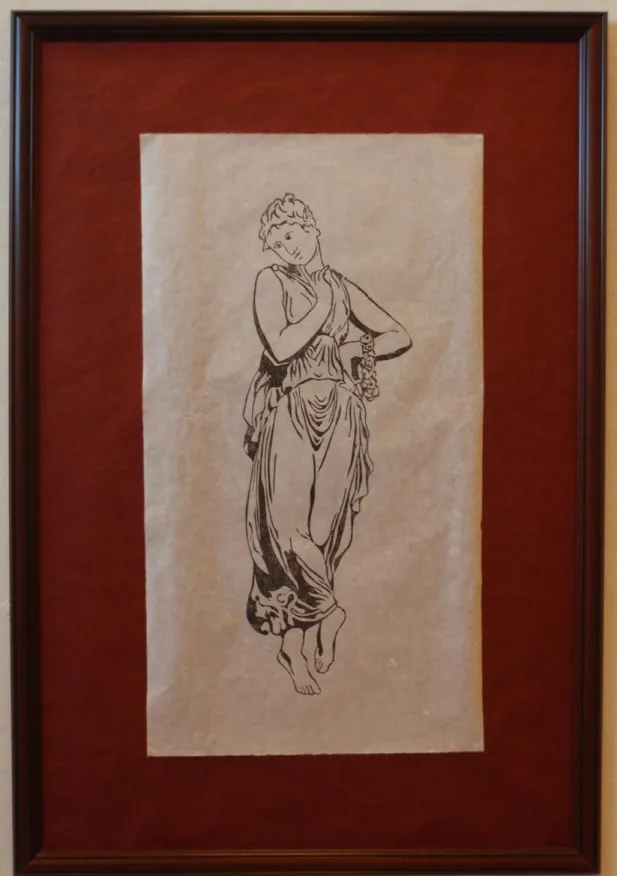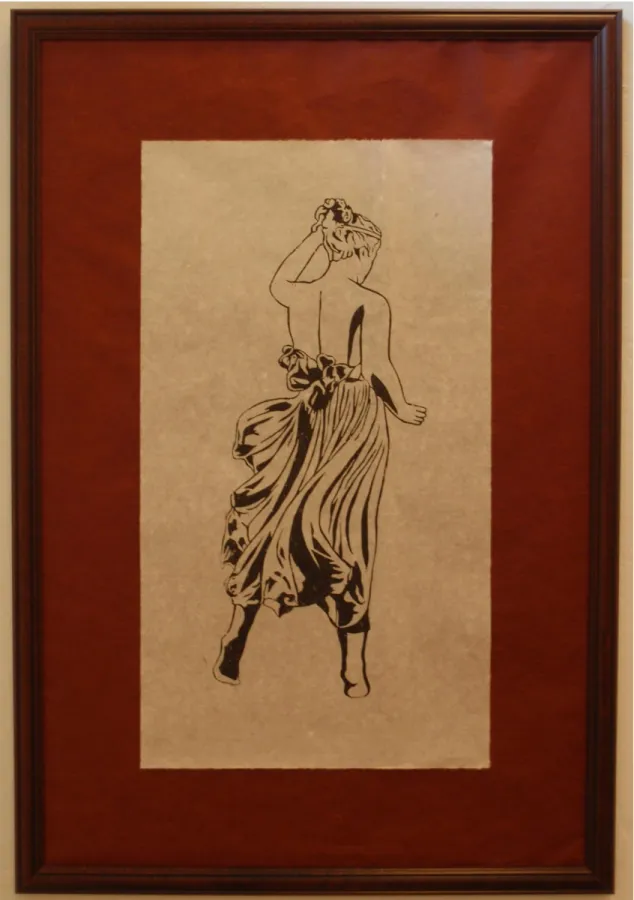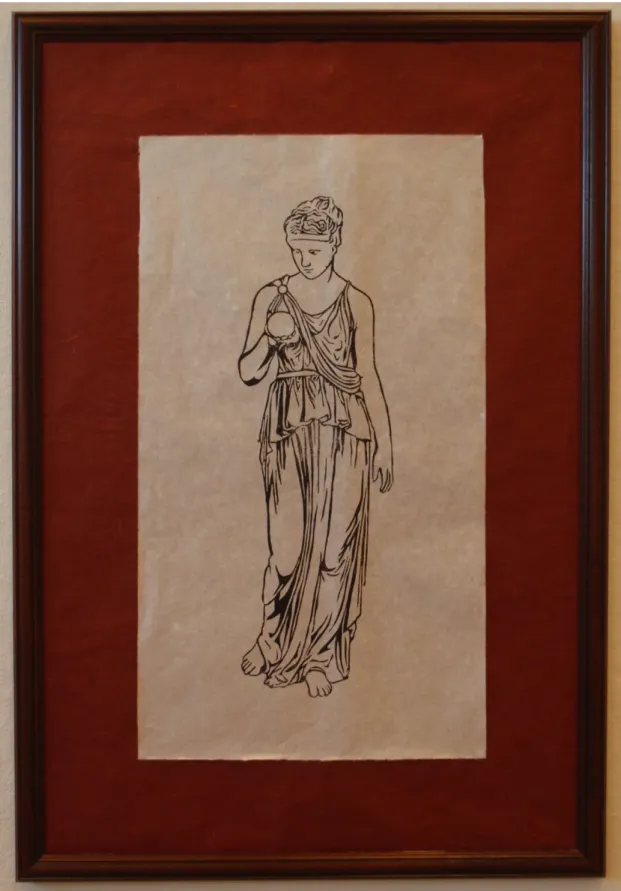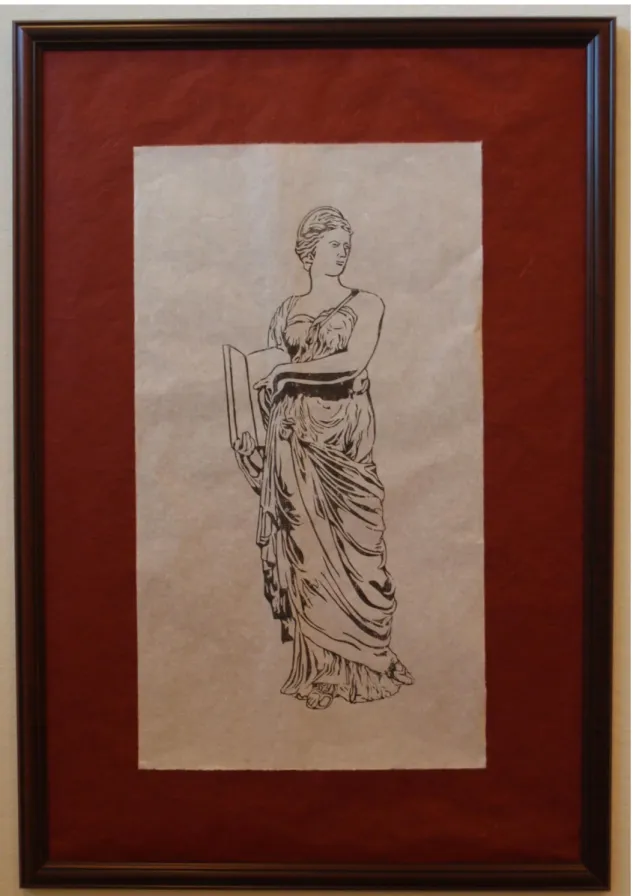The paper reflects the delicacy of the women, while the printing speaks of traditional methods. Five enormous paintings of the Muses by Charles Meynier hang along the longest wall of this open space. She places one sandaled foot in front of the other and bends her hip to the side in an elegant contraposto as she leans on the pedestal on which her lyre rests.
Finally, I chose a sculpture by the Danish-Icelandic sculptor Bertel Thorvaldsen, an artist celebrated as the Danish version of the Venetian Canova. The frames are dark mahogany, traditional, but not so heavy as to counteract the lightness of the paper. The simplicity of the images is reminiscent of ancient artifacts buried under layers of time.
My work is not only about understanding the history of the pieces, but also about connecting with each figure on a personal level. If a viewer knows something about the mice, this just adds extra layers of understanding to the display of the print. Because of the aesthetic that I aimed to achieve, I chose my statues from a specific pool.
The lines of the fabric cling to the curves of the body and emphasize their femininity in graceful sweeps.
The Muses
They do not speak with their own voices, but are called upon by those in need. It is not their own deeds, but the deeds they inspire others to achieve that deserve their fame. When taken together as a sisterhood, the Muses are understood as the blending of the various elements that make up culture.7 Fundamentally, they personify our basic urges.
Dupree writes that the “Muses represent or are that acquired skill of certain persons which distinguishes men not only from animals, but also from other kinds of men.”8. To quote the words of Robert Sardello, “the original act of religion, of relating to the divine, is not one of fear, but of praise.” He goes on to say that “[fear] separates us from the divine; praise unites us with the divine in an act of trust.”9 By expressing ourselves and appreciating the beauty of the world around us, we are essentially praising the divine and all its creations. It follows that an institution dedicated to preservation, creation and celebration would thus take its name from the sisters; the museum is literally the home or seat of the Muses.10 It is also a place of knowledge, literature and art.11 Here history comes to life.
It is widely accepted that the basic human needs are food, drink, shelter and sex. By exploring the domains of the muses, we can begin to learn to work in harmony. The muses help us explore the intricate, creative facets of our personalities and express who we really are.
They free us from the bare necessities of survival and lead us on our own path to success.
Identity
For the Muse, who represents the sacred, I wanted a figure who looks into herself and finds her connection to the divine. My inspiration for Polyhymnia comes from a statue by the Italian Neoclassical sculptor Antonio Pittaluga that I saw at the National Gallery of Art in Washington D.C. It is interesting to note that it may also be the mother of sirens that they use.
My inspiration for Melpomene comes from a statue found in the second century in Monte Calvo, Italy. An essay on Terpsichore by Joanne Stroud expresses many of the ideas I want to convey about the Muse and about dance. Stroud explains that dance is the “coordination of music and movement and the tension between these two forms of expression.”
My inspiration for Terpsichore comes from a statue by the Italian neoclassical sculptor Antonio Canova. It was carved in 1812 and can be found in the State Hermitage Museum in St. Like this dancer, my Terpsichore is captured in the moment “just before inspiration bursts upon her.”17.
My inspiration for Thalia comes from a statue by Italian sculptor Antonio Pittaluga that I viewed at the National Gallery of Art in Washington D.C. Nymph of the Fields.” It was carved in 1915 and belongs to another image from which I draw for Polyhymnia. This depiction of a woman at peace in nature is directly related to Thalia's role as muse of pastoral poetry.
She brings joy and can be found whenever there is entertainment, especially at festivals. She lets the joy of the moment move as it will, striking a playful pose as she lets her body express the lyrics flowing through her. My inspiration for Euterpe comes from a statue carved in 1819 by the Italian neoclassical sculptor Antonio Canova.
My image of Euterpe is captured in the moment before she bursts into a lively dance. The mouse stares into an orb in her hand in an attempt to center herself and see through the confusion around her. Calliope is not interested in the facts of history, but in the power of imagination to create meaningful stories based on actual events.
She is aware of the world around her and interprets it in her own inspired ways.
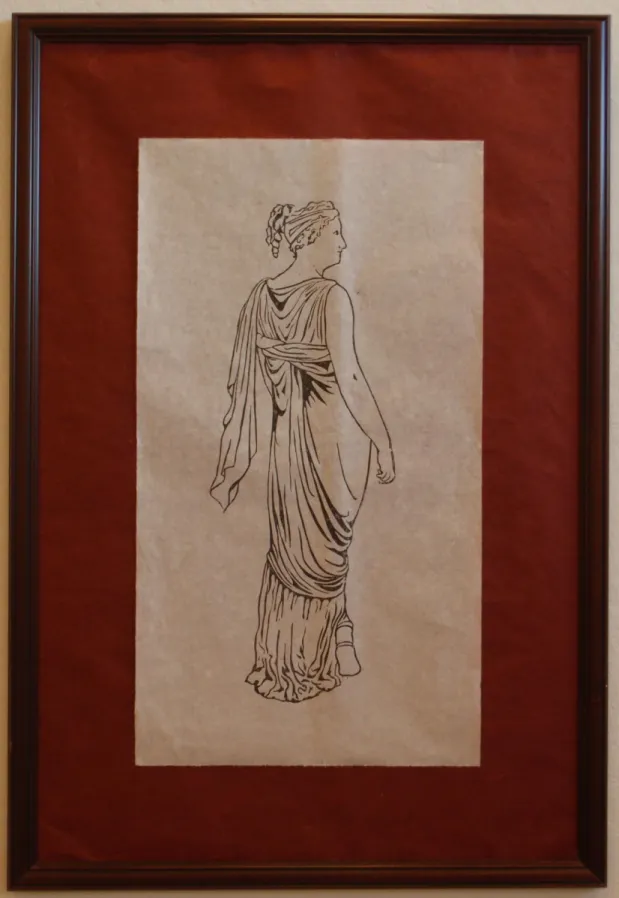
Thrice Three
Bibliography
